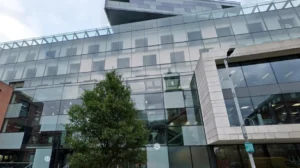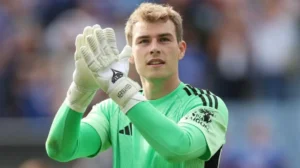Key Points:
- Hackney Council approved the £2m sale of three buildings in Dalston’s cultural quarter.
- Properties on Ashwin Street deemed ‘dangerous’ and too costly for council maintenance.
- Artist collective V22, managing 40 creative workspaces, ordered to vacate by April.
- Concerns over potential ‘private sector carve-up’ as tenants and campaigners fear gentrification.
- Dalston Eastern Curve Garden’s future at risk due to its facilities being tied to the sold sites.
- Marie Murray, co-owner of Curve Garden, urged sale conditions to prevent demolition.
- Hackney’s Mayor Caroline Woodley declined to add restrictions, citing planning safeguards.
- Dalston Cllr Zoë Garbett (Green) warned that private buyers could erase creative spaces.
- Cllr Grace Adebayo (Labour) vowed to monitor the process to protect Dalston’s culture.
- OPEN Dalston’s Bill Parry-Davies criticised the lack of democratic oversight post-sale.
- V22 claims the buildings met safety requirements before the eviction notice.
- Sale proceeds will go towards Hackney Council’s capital programme.
Hackney Council has approved the £2 million sale of three buildings in Dalston’s cultural quarter, sparking fears among tenants and campaigners over the future of the area’s artistic spaces.
At a meeting last night, the council finalised plans to offload the properties on Ashwin Street, arguing that they had become too dangerous and expensive to maintain. However, critics warn that selling to private buyers could push out creative communities and threaten the long-term cultural identity of Dalston.
Why is Hackney Council Selling the Buildings?
Cllr Robert Chapman, Hackney’s cabinet member for finance, defended the decision, stating that the council was financially unable to carry out necessary repairs.
“These buildings have fallen into dangerous disrepair, and we are simply not in a position to maintain them,” Chapman explained.
The properties at 10-16 Ashwin Street have been home to the artist collective V22, which manages around 40 creative workspaces. The council has ordered them to vacate the premises by the end of April, citing safety concerns.
What Does This Mean for Dalston’s Creative Community?
The sale has triggered alarm among local artists, campaigners, and business owners. Many fear the move could pave the way for private developers to transform the area, reducing affordable creative spaces.
Marie Murray, co-owner of the Dalston Eastern Curve Garden, warned that demolishing the buildings would have ‘catastrophic’ consequences.
The Ashwin Street site includes part of the garden’s only indoor space, its office, and a WC. Murray urged Hackney’s Mayor Caroline Woodley and the cabinet to include a clause in the sale agreement preventing demolition.
“We need assurances that this sale will not destroy a vital part of Dalston’s cultural and green space,” Murray said.
Will the Council Protect the Buildings from Demolition?
Mayor Woodley refused to introduce restrictions on the sale, stating that it was too early to enter negotiations with potential buyers. She reassured the public that planning rules would be used to prevent harmful developments.
“We recognise the importance of this cultural quarter and will ensure that any plans brought forward do not compromise community interests,” she said.
Hackney’s director of strategic property, Chris Pritchard, backed this stance, arguing that placing conditions on the sale would “tie the council’s hands” at a time when it needed flexibility.
What Are Local Councillors and Campaigners Saying?
Green Party Dalston Cllr Zoë Garbett criticised the council’s approach, warning that a sale to private developers could lead to the loss of yet another creative space.
“Time and time again, artists transform areas into vibrant cultural hubs, only to be forced out when developers swoop in,” Garbett said.
She expressed concerns that “affordable workspace” often translates into commercialised co-working spaces rather than true artist studios.
Labour Cllr Grace Adebayo also pledged to “closely monitor” the planning process to protect Dalston’s cultural identity.
How Did the Buildings Come into Public Ownership?
The Ashwin Street buildings were originally acquired in 1985 using public money and charitable donations. Since 2005, V22 has managed them as creative workspaces, providing affordable studios, workshops, and exhibitions.
However, Hackney Council argues that it has already spent £800,000 on major repairs and can no longer justify the costs.
Community group OPEN Dalston’s Bill Parry-Davies accused the council of abandoning its responsibility to protect publicly funded cultural spaces.
“These buildings were secured with public money for community benefit. Now, there will be no further democratic scrutiny over what deal council officers strike with private buyers,” he warned.
What Happens Next?
- V22 has entered negotiations with the council to purchase the buildings.
- Any future buyer must apply for planning permission before making structural changes.
- Proceeds from the sale will be used for Hackney Council’s capital investment programme.
As the fate of Dalston’s creative quarter hangs in the balance, local artists and campaigners remain sceptical about whether the council will truly safeguard the area’s cultural heritage.








